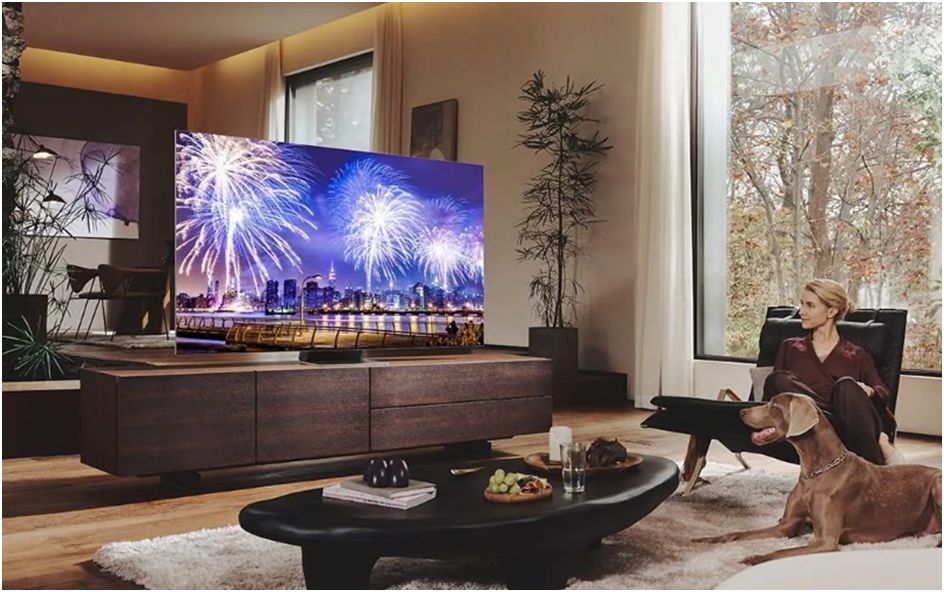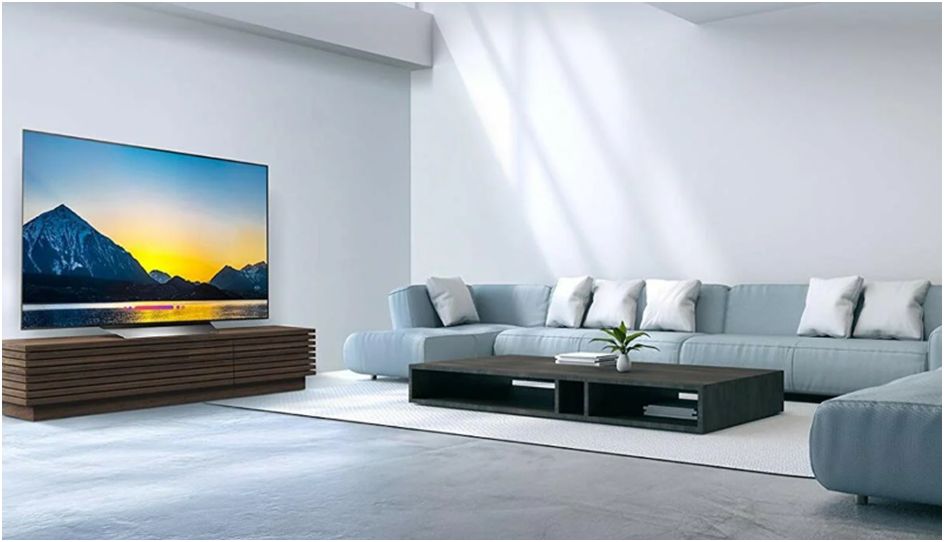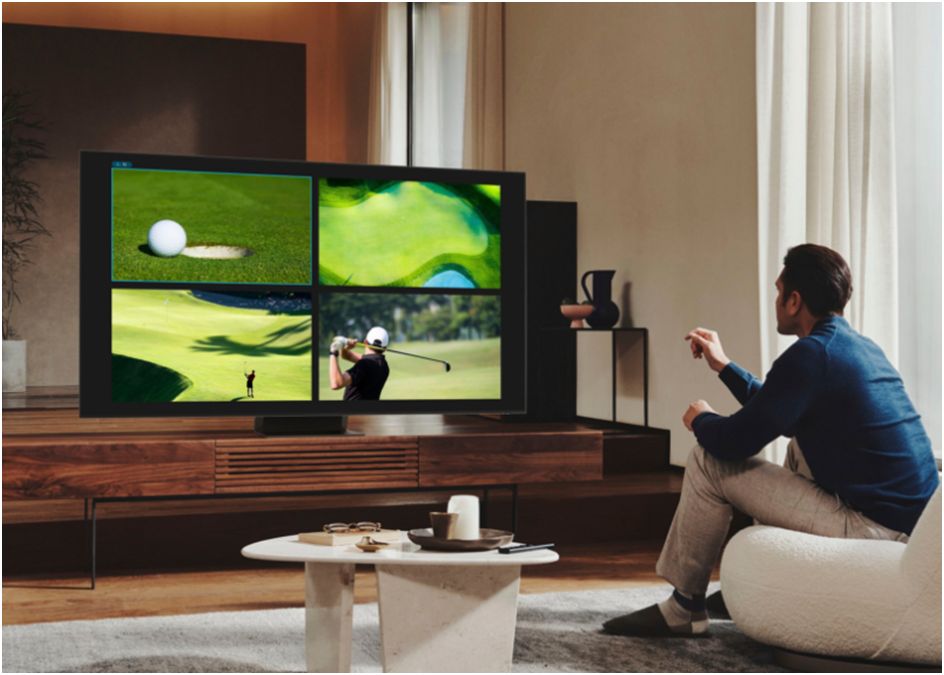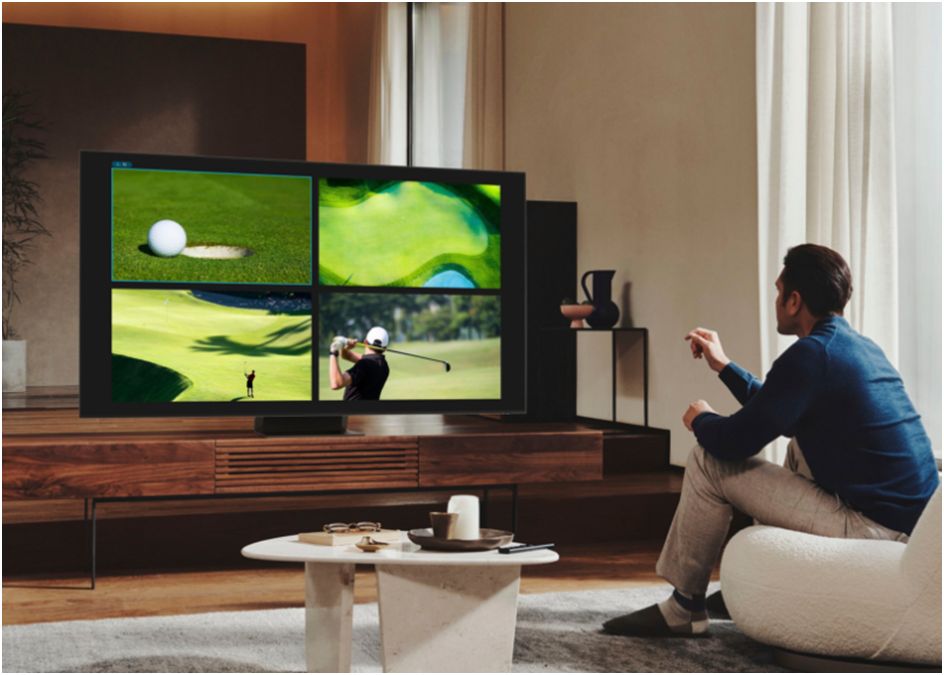
Picture Perfect: How to Select the Best TV for an Immersive Viewing Experience
Imagine sitting in your cosy living room, completely engrossed in a movie, as vibrant colours dance across the screen and every detail comes to life before your eyes. A truly immersive viewing experience is within your reach, and it all starts with choosing the perfect TV. But with so many options out there, it can feel overwhelming. So, let’s help you choose the right one.
This article will explore the key factors you need to consider, from display technologies to resolutions, connectivity options to smart TV features. By the end, you’ll have the knowledge and confidence to bring home a TV that delivers a truly picture-perfect experience. No jargon, no confusion – just straightforward advice to empower you in making the right choice.
Size It Right

The size you select determines whether you’ll get a comfortable viewing experience or not. To choose right, it’s best to take into account where you’re planning to place your new set and how many members of your family generally watch at once. Then, based on your budget pick the largest screen size that will fit in that area comfortably.
The size of the screen should also be influenced by how far away you are from the TV. In general, if you can distinguish individual pixels on the screen, you are too close. To find the best distance, it’s recommended to sit three times the screen’s height away from the TV for HD and only 1.5 times the screen’s height for 4K Ultra HD. In other words, you can sit twice as close to a 4K UHD Screen.
Television sets today range all the way to 95-inch models. The smallest size for a modern room is a 55-inch set. This is usually suitable for an average living room, but if the space is larger, a bigger set is a better option. A 65-inch is another good option for an average-size space, especially if more people will be watching television at the same time.
If you have a huge space or want to enjoy seeing the details and get a quality home theatre experience, consider the high-end models, such as buying a QLED TV 75 inch set. These and larger models such as 85 and 95 inches are recommended for dedicated home theatre rooms.
Understand the Display Technologies at Your Disposal
The first step in choosing a TV is understanding the different display technologies available. LCD, OLED, QLED, and others each have their own strengths and weaknesses when it comes to picture quality.
- LCD TVs are known for their affordability and brightness but may struggle with contrast levels.
- OLED displays offer deep blacks and vibrant colours, providing an excellent viewing experience, but they tend to be more expensive.
- QLED TVs bridge the gap between LCD and OLED, offering enhanced brightness and colour reproduction. QLED TV 75 inch sets are considered the best option for premium home theatre entertainment.
Pick a Resolution
Resolution plays a crucial role in determining the clarity and detail of the images on your screen. HD, Full HD, 4K, and 8K are common resolutions found in TVs. While HD and Full HD are still prevalent, 4K has become the new standard for sharpness and detail.
8K, with its incredibly high resolution, is cutting-edge technology for those seeking the ultimate visual experience. However, it’s important to consider the content availability and your viewing distance when deciding on a resolution.
Look for HDR for More Realistic Images

The visuals on your TV have better contrast and colour depth thanks to high dynamic range (HDR) technology. HDR-capable sets have a wider range of brightness levels, producing images that are more realistic.
If you want to get this effect, look for a TV that supports HDR, such as HDR10, Dolby Vision, or Hybrid Log-Gamma (HLG), when making your purchase. Each format has advantages of its own, and compatibility with Blu-ray players and streaming services should be taken into account.
Another important factor is colour accuracy. More vivid and accurate colours are possible with a wide colour gamut. Look for TVs that support wide colour gamuts like Rec. 2020 or DCI-P3 and have great accuracy.
Check the Refresh Rate and Motion Handling Features
The ease with which a TV renders quickly changing content depends on its refresh rate. If there’s a higher refresh rate, there will be less blur and a smoother picture transition.
The refresh rate is commonly expressed in Hertz (Hz). While 60Hz refresh rates are the norm, many models today also offer 120Hz or even 240Hz refresh rates. It’s crucial to remember, though, that faster refresh rates are more apparent in fast-paced action movies or sports.
The motion-handling features of a set also affect the viewing experience. Motion interpolation and black frame insertion are two motion-handling algorithms that can further enhance clarity.
Black frame insertion places black frames between successive frames to improve motion sharpness, while motion interpolation adds false frames to lessen blurriness. These features can be very useful for anyone watching a lot of sports or action movies.
Smart Features Give You Access to a Variety of Content

With the ability to access streaming services, apps, and other online material, smart television sets are gaining popularity. Consider a set’s smart TV platform and the availability of well-known apps before making your selection.
Ensure that your favourite streaming apps, such as Netflix, Hulu, Amazon Prime Video, or Disney+, are available on the platform. It’s also worth considering the availability of other apps you might use, such as YouTube, Spotify, or gaming apps.
Also, look for a user-friendly design and easy navigation. To ensure a seamless and comfortable user experience, look for sets with intuitive menus, easy access to settings, and speedy app loading times.
Check the Ports and Connectivity Options
For connecting devices like gaming consoles, Blu-ray players, or sound systems, HDMI ports are essential. Make sure there are enough HDMI ports on the set for all of your gadgets.
If you need to attach external storage devices or play multimedia content, USB ports can be helpful. Check for Wi-Fi and Bluetooth capability if you want wireless connectivity.
Factor In Your Budget
Like with every purchase, taking your budget into account is essential. Based on your priorities and desired features, establish a range. Think about the features that are most important to you, such as display technology, resolution, or audio capabilities. To make an informed choice, compare specifications, read reviews, and research several TV models that fall within your price range.

